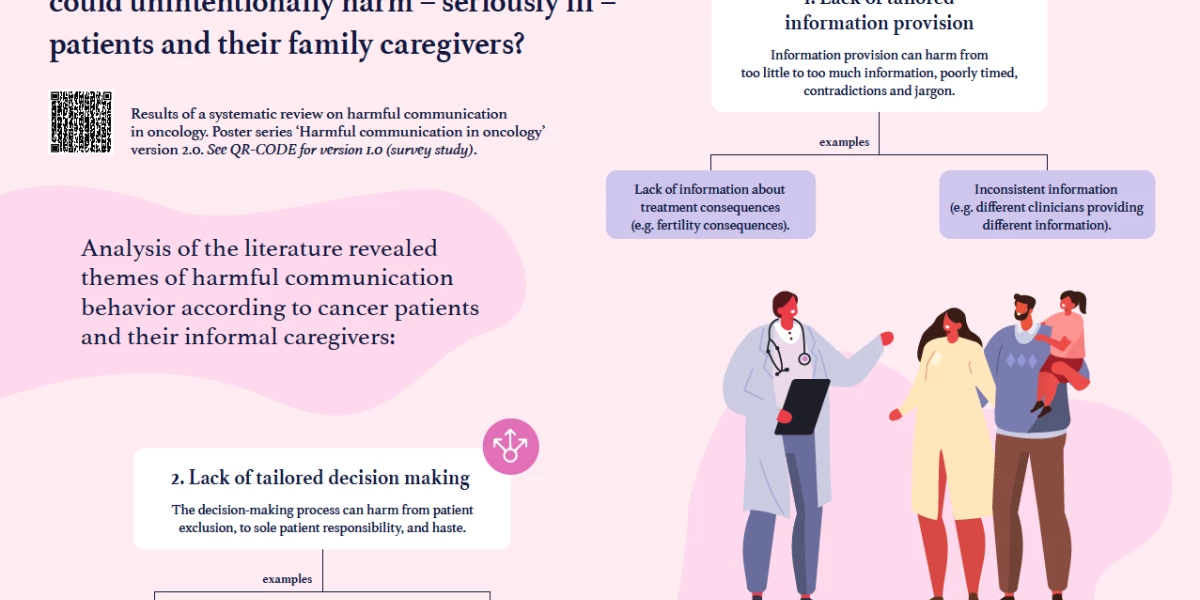New publication on harmful communication in cancer care
Harmful communication behaviors in cancer care: a systematic review of patients and family caregivers perspectives
What starts by hearing the words "You have cancer.." may be followed by difficult decisions, intensive treatments, side effects, anxiety and an uncertain future. Clinicians play a crucial role in informing and supporting patients and their family caregivers during this disease process. However, many complaints within the medical system revolve around clinician communication. Dissatisfactions in communication are often a reason for seeking a second opinion. We sought to better understand what the current literature reveals about what patients and family caregivers specifically perceive as harmful communication behavior.
We searched for all types of peer-reviewed studies that determined adult (≥18 years) cancer patients’ and/or family caregivers’ perspectives on which clinicians’ communication behaviors can harm in several databases, supplemented by expert-consultation. Studies were screened using the Artificial intelligence (AI) screening tool of ASReview and data was analyzed using Thematic Analysis. To assess the quality of the studies the Qualsyst critical appraisal tool was used.
A total of 47 studies were included. Four main themes of harmful communication behaviors were identified: 1) Lack of tailored information provision (e.g. giving too little or too much/specific information) 2) Lack of tailored decision making (ranging from; patient exclusion, to the patients’ responsibility, and/or haste) 3) Lack of feeling seen and heard (seen as a disease, not as a human being; not listened to concerns and emotions) 4) Lack of feeling held and remembered (forgotten agreements; lack of care continuity).
Our results reveal a comprehensive overview of cancer patients’ and family caregivers’ perspectives on which clinicians' communication behaviors can harm. Harm could be prevented when information and decision involvement are tailored and patients’ and family caregivers’ needs to feel seen, heard, held and remembered are met. We hope this systematic review can provide clinicians with tools to communicate with patients and their family caregivers while preventing unnecessary potential harm.
Read the discussion section of our article here for practical recommendations based on existing literature. The results have now also been published as a poster for education and the clinician’s office.

